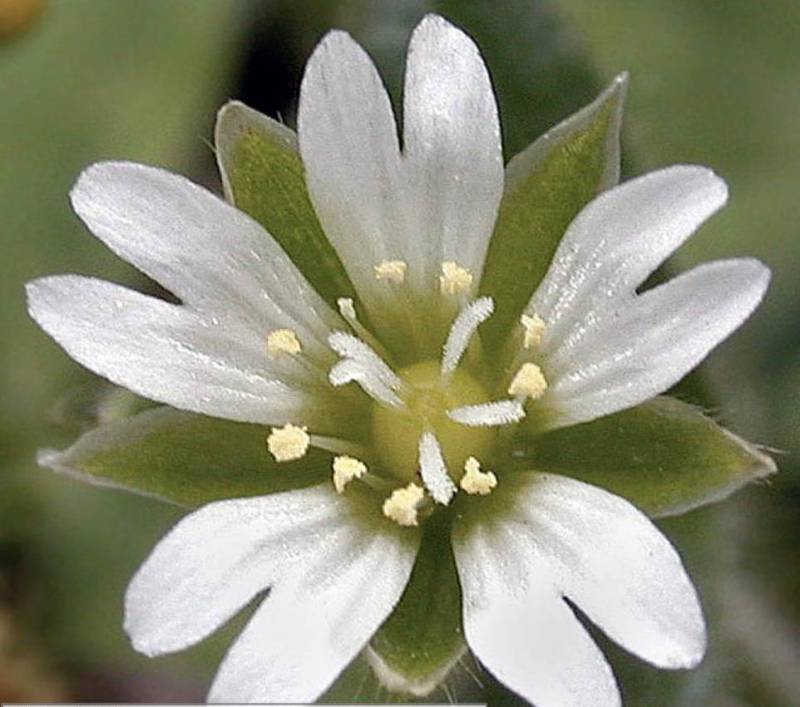Cerastium glomeratum
Cerastium nutans
sticky mouse-ear chickweed
nodding mouse-ear chickweed
Basal and lower cauline leaves spatulate to obovate, opposite, 8-15 mm. long and up to 8 mm. broad, tapered to the petiole; middle and upper cauline leaves larger, ovate to obovate, sessile.
Leaves opposite, the basal and lower cauline spatulate to oblanceolate, 7-25 mm. long, broadly short-petiolate;
cauline leaves several pairs, linear-lanceolate to ovate, sessile.
Flowers numerous, in tight clusters in an open inflorescence;
pedicels shorter than the calyx;
sepals 5, 4-5 mm. long, stiff-hairy;
petals 5, white, equal to the sepals;
stamens 10;
styles 5.
Flowers several in a loose, leafy, bracteate cyme; pedicles slender, 5-20 mm. long, spreading to ascending by sharply deflexed near the tip;
sepals 5, 3-5 mm. long;
petals white, from slightly shorter to half again as long as the sepals, sometimes lacking;
styles 5, distinct to the base, opposite the sepals;
stamens 10.
Capsule cylindric, twice as long as the calyx.
Capsule cylindric, 2-3 times as long as the calyx.
Cerastium glomeratum
Cerastium nutans
- Local floras:
BC,
CA,
OR,
WA
- Local Web sites:
CalFlora,
CalPhotos,
Flora NW,
PNW Herbaria
WildflowerSearch
iNaturalist (observations)
USDA Plants Database
- LBJ Wildflower Center
- SEINet
- Plants of the World Online
- Encyclopedia of Life
- Wikipedia
- Google Image Search
- Local floras:
BC,
OR,
WA
- Local Web sites:
Flora NW,
PNW Herbaria
WildflowerSearch
iNaturalist (observations)
USDA Plants Database
- LBJ Wildflower Center
- SEINet
- Plants of the World Online
- Encyclopedia of Life
- Wikipedia
- Google Image Search



